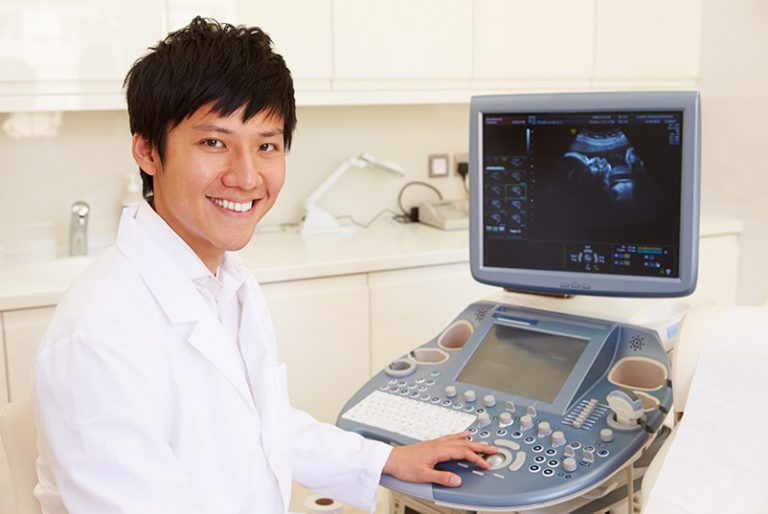Radiologic Technology vs Ultrasound Technician: Complete Career Comparison Guide
Understand medical imaging careers
Medical imaging play a crucial role in modern healthcare, with various specialized professionals operate different types of equipment to help diagnose and treat patients. Two usually confused career paths are radiologic technology and ultrasound technology, which while relate, have distinct differences in scope, training, and daily responsibilities.
Radiologic technology serve as an umbrella term encompass multiple imaging modalities, while ultrasound technology represent a specific specialization within the broader field of medical imaging. Understand these distinctions help prospective students and career changers make informed decisions about their professional future.
What’s radiologic technology?
Radiologic technology encompass a broad spectrum of medical imaging procedures and equipment. Radiologic technologists, to know as medical imaging technologists, operate various types of imaging equipment to create detailed pictures of internal body structures.
The field include multiple specializations such as x-ray technology, computed tomography (ct ) magnetic resonance imaging ( (iMRI)ammography, nuclear medicine, and radiation therapy. Each specialization require specific training and certification, though many technologists cross train in multiple modalities throughout their careers.
Radiologic technologists work in hospitals, clinics, imaging centers, and other healthcare facilities. They interact flat with patients, position them right for imaging procedures, operate complex equipment, and ensure patient safety throughout the process.
Core responsibilities of radiologic technologists
Daily duties vary depend on the specific imaging modality, but mostly include prepare patients for procedures, explain the imaging process, position patients suitably, operate imaging equipment, maintain detailed records, and collaborate with radiologists and other healthcare professionals.
Safety protocols form a critical component of radiologic technology work, specially when deal with ionize radiation. Technologists must follow strict guidelines to protect both patients and themselves from unnecessary radiation exposure.
Understanding ultrasound technology
Ultrasound technology, to call diagnostic medical sonography, represent a specialized branch of medical imaging that use high frequency sound waves to create real time images of internal body structures. Unlike many other imaging modalities, ultrasound does not use ionize radiation, make it peculiarly valuable ffor examiningpregnant women and monitor fetal development.
Ultrasound technicians, right call diagnostic medical sonographers, operate sophisticated ultrasound equipment to examine various body systems include the cardiovascular system, abdomen, pelvis, and musculoskeletal structures. The profession require strong technical skills combine with excellent patient interaction abilities.
Sonographers oftentimes specialize in specific areas such as obstetric and gynecologic sonography, abdominal sonography, cardiac sonography (echocardiography ) or vascular sonography. Each specialization require additional training and certification beyond basic sonography education.
Daily responsibilities of ultrasound technicians
Ultrasound technicians prepare patients for examinations, apply specialized gel to facilitate sound wave transmission, manipulate transducers to obtain optimal images, analyze images for technical quality, and document findings for physician review.
The role require significant patient interaction, as sonographers oftentimes spend extended time with patients during examinations. They must maintain patient comfort while obtain high quality diagnostic images, frequently require multiple positioning adjustments and breathing instructions.
Key differences between the professions
While both careers fall under medical imaging, several important distinctions separate radiologic technology from ultrasound specialization. Understand these differences help clarify career expectations and requirements.
Scope of practice
Radiologic technology encompass multiple imaging modalities, offer broader career flexibility and cross-training opportunities. Technologists may work with x-ray, ct, MRI, mammography, and other equipment types, oft within the same position.
Ultrasound technology focus specifically on sonographic imaging, provide deeper specialization in this particular modality. While sonographers may cross train in different ultrasound specialties, their primary expertise remains within sonography.
Equipment and technology
Radiologic technologists work with various imaging systems, many of which utilize ionize radiation or powerful magnetic fields. Equipment range from basic x-ray machines to sophisticated MRI scanners and linear accelerators for radiation therapy.
Ultrasound technicians mainly work with ultrasound systems that use sound waves preferably than radiation. The equipment is broadly more portable and versatile, allow for bedside examinations and real time imaging guidance for medical procedures.
Patient interaction
Both professions involve significant patient contact, but the nature of interactions differs. Radiologic technologists typically have shorter patient encounters, focus on positioning and instruction for specific imaging procedures.

Source: ultrasoundtechnicianschools.com
Ultrasound technicians oftentimes spend longer periods with individual patients, specially during complex examinations or obstetric visits. The real time nature of ultrasound imaging allow for more interactive examinations and immediate image review with patients.
Education and training requirements
Both career paths require formal education beyond high school, but specific requirements vary between programs and specializations.
Radiologic technology education
Virtually radiologic technologists complete associate degree programs in radiologic technology, typically last two years. Programs include classroom instruction in anatomy, physiology, radiation physics, and patient care, combine with extensive clinical training in healthcare facilities.
Some technologists pursue bachelor’s degree programs, peculiarly those interested in management roles or specialized positions. Additional certifications in specific modalities oftentimes require separate training programs range from several months to over a year.
Ultrasound technology education
Ultrasound technicians typically complete specialized sonography programs, which may be certificate programs, associate degrees, or bachelor’s degrees. Program length vary from one to four years depend on the educational pathway and prior healthcare experience.
Many sonography programs require prerequisite courses in sciences and mathematics. Some programs accept students with prior healthcare experience, while others admit students straight from high school.
Certification and licensing
Professional certification demonstrate competency and enhance employment opportunities in both fields.
Radiologic technology certification
The American registry of radiologic technologists (aart))rovide national certification for radiologic technologists. Certification require graduation from an accredited program and pass a comprehensive examination.
Additional certifications are available for various specializations, each require specific education and examination requirements. Many states require license for radiologic technologists, oft base on arartertification.
Ultrasound certification
Multiple organizations offer sonography certification, include the American registry for diagnostic medical sonography (aarms))ameAmericangistry of radiologic technologists ( a(tarta) cardiovascular credentialing international ( cci ( CCI)
Certification requirements include graduation from an accredited program or equivalent experience, plus pass specialty examinations. Most employers prefer or require professional certification for ultrasound positions.
Career opportunities and work environment
Both professions offer diverse employment opportunities across various healthcare settings.
Employment settings
Radiologic technologists work in hospitals, outpatient imaging centers, physician offices, and specialized facilities. The broad scope of radiologic technology create opportunities in multiple departments within larger healthcare systems.
Ultrasound technicians find employment in similar settings, with additional opportunities in obstetric practices, cardiology clinics, and mobile imaging services. The portable nature of ultrasound equipment create unique employment possibilities.
Advancement opportunities
Career advancement in radiologic technology may include specialization in additional modalities, supervisory roles, education positions, or sales and applications support for equipment manufacturers.
Ultrasound technicians can advance through specialization in different sonography areas, management positions, education roles, or transition into related fields such as vascular technology or cardiac catheterization.
Salary and job outlook
Compensation vary base on geographic location, experience, specialization, and work set for both professions.
Radiologic technologists mostly earn competitive salaries, with specialized modalities oftentimes command higher compensation. The broad scope of the field provide multiple pathways for salary advancement through additional certifications and cross-training.
Ultrasound technicians typically earn comparable or somewhat higher salaries than general radiologic technologists, reflect the specialized nature of sonography. Cardiac and vascular sonographers oft earn the highest salaries within the ultrasound field.
Both professions show positive job growth projections, drive by an age population require increase medical imaging services. Technological advances continue to create new opportunities and applications for medical imaging professionals.
Choose the right career path
Select between radiologic technology and ultrasound specialization depend on individual interests, career goals, and personal preferences.

Source: exploremedicalcareers.com
Consider radiologic technology if you prefer variety in daily work, enjoy learn multiple imaging modalities, and want flexibility to cross train in different specializations. The broader scope provide more diverse career opportunities and potential for advancement into management or specialized technical roles.
Choose ultrasound technology if you prefer deeper specialization, enjoy extend patient interaction, and are interested in real time imaging applications. The field offer excellent career stability and opportunities for subspecialization within sonography.
Personal considerations
Both careers require strong technical skills, attention to detail, and excellent patient communication abilities. Physical demands include stand for extended periods, lifting and position patients, and work with heavy equipment.
Consider your learn style and career timeline when choose between programs. Some individuals prefer the broader foundation of radiologic technology with later specialization, while others prefer focused ultrasound training from the beginning.
Make an informed decision
Research local educational programs, speak with work professionals in both fields, and consider shadow opportunities to gain firsthand experience. Many healthcare facilities offer job shadow programs that provide valuable insight into daily responsibilities and work environments.
Evaluate program requirements, costs, and duration when compare educational options. Consider whether you prefer a broader foundation with later specialization or immediate focus on a specific imaging modality.
Both radiologic technology and ultrasound technology offer rewarding careers in healthcare with excellent job security and advancement opportunities. The choice finally depends on your individual interests, learn preferences, and long term career goals within the dynamic field of medical imaging.
MORE FROM grabjobtoday.com













